This post may contain affiliate links. Please read our disclosure policy.
Two simple methods for homemade chickpea flour (garbanzo bean flour) – an excellent gluten-free flour option for a wide variety of your baking needs.
It may seem like I’m a bit chickpea obsessed, especially if you’ve noticed that my number of chickpea-related recipes and DIY’s is going up every single week. What can I say, I love this ingredient! Learning how to make chickpea flour is incredibly simple, and it can then be used for your delicious gluten-free baked goods and a variety of comfort foods.
I’ve mentioned homemade flour recipes in previous posts – oat flour, almond flour, etc. These are all super simple to make at home. Along with hundreds of other ‘ingredients’ that you may have never thought even to try to make: yogurt (plain, coconut, almond), cheese (Cream Cheese, Vegan Feta, Vegan Mozzarella, and vegan cheddar). Even staples like dairy-free milks, nut & seed butters, and tofu (two ways!).
Honestly, it’s wonderful learning to make things from scratch and knowing that you have that knowledge forever-more. It also makes you appreciate the food that you’re putting into your body even more – knowing that you have made these ingredients personally.
In fact, this post contains TWO methods for making homemade chickpea flour: one with dried chickpeas and, my preferred method, using soaked and then dried chickpeas. I’ll explain why below.
Notes
- Gluten-free flours often need slightly different amounts within a recipe. For example, substitute 1 cup regular flour for 3/4 cup chickpea flour.
- I know some will ask why we don’t use cooked beans for this. Because we will cook the flour in whatever recipe it’s used in, the chickpeas don’t need to be pre-cooked.
- I’ll often soak enough chickpeas so I can use some for chickpea flour (gram flour) and will then cook some and freeze them for meals (saving the cooking liquid to use as aquafaba).
- Below is an image of dried chickpeas (store-bought), rehydrated (soaked) chickpeas, and dehydrated chickpeas. It’s best to label your containers of the store-bought dried and dehydrated, so they’re not mixed up.
How To Make Chickpea Flour
Needed:
- Dried chickpeas
The Two methods
Option 1:
A lot of people directly grind the store-bought dried chickpeas into flour. I am not a big fan of this option since the chickpeas usually are never washed before packaging and could be sprayed with nasty chemicals to prolong their shelf life. Now I know that cooking will remove/kill the germs, but I’d rather they not to be present before processing the chickpeas into flour.
However, if you’re buying organic chickpeas that aren’t sprayed with any pesticide, etc., then this method is a super-quick ‘instant’ chickpea flour.
Simple, place your chickpeas in a coffee/spice grinder or high-speed blender, and grind them into a fine powder.
Sieve the flour, to remove any larger lumps, and then you can re-grind these too.
Once ready, store your chickpea flour in an airtight container for up to two months.
Option 2 (my preferred method):
This option is a longer process (although the actual hands-on time is near-identical), making sure that the chickpeas are cleaned and soaked, before being dried and ground into flour. This will make sure there’s no pesticide/nasty residue on the chickpeas and soaking is also said to increase their nutritional value and are easier digested.
For this method, first, rinse your dried chickpeas.
Then, soak them overnight (minimum of 8 hours, and you can go up to 24 hours). Make sure to cover them with enough water (usually a few inches of water above the chickpeas) as they will expand 2-3 times their size.
Once soaked, drain the water (or use it to water your plants) and pat them dry thoroughly.
Note* I’ll often soak enough chickpeas to make some flour as well as cook and freeze some for later dishes. You can see the full guide on how to cook dried chickpeas here (as well as prep, freeze and even store the cooking liquid to use as aquafaba).
Now we need to dry (dehydrate) the chickpeas. Place them on a large tray (a baking sheet or dehydrator tray will work). Make sure to place them in a single layer (not overlapping at all); otherwise, the drying process can take far longer.
You can let them dry out in a sunny warm spot or dry them in the dehydrator or oven at 50ºC for 12 hours.
I dried mine in a dehydrator, just because it’s far quicker than letting them air out.
The chickpeas need to be completely dry before we grind them. Otherwise, they will be mushy, and you’ll end up with a mash and not a fine powder.
When the chickpeas are completely dry, grind them.
You can blend them in a high-speed food processor/blender or grind them to a fine flour in a spice grinder.
Sieve the flour to remove any lumps. Then, you can try grinding the larger particles again. If using a grinder, you’ll need to do this 2-3 tBsp at a time. Either method may require a few passes for all the chickpeas to become finely ground.
Once ready, transfer to an airtight jar of your choosing and store for up to two months.
Chickpea Flour Recipes/Uses
There are tons of ways to use your freshly-made chickpea flour from using it to thicken up sauces and curries, as an easy gluten-free flour swap.
Chickpea flour (gram flour) can also be used as a great binding agent (for fritters, veggie burgers, etc.) and is well-known for making pancake/crepe-like flatbreads (called Socca in France and Farinata in Italy). As well as other ‘bread’ – like tortillas, taco shells, etc.
But it can be used for so many recipe types: omelettes, bread, cake, cookies, pizza, etc.
If you have any questions, feel free to ask them in the comments. You can also tag me in your recreations on Instagram @Alphafoodie.
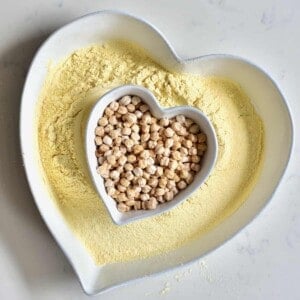
How To Make Chickpea Flour
Equipment
- Pot
- Oven or dehydrator
- Airtight jar for storing
Ingredients
- chickpeas
Instructions
Option 1
- Directly blend the dried chickpeas in a high-speed food processor/blender or grind them in a spice grinder.
- Sieve the flour to remove any lumps. Then try grinding the larger particles again.Store in an airtight container for up to 2 months.
Option 2 (my preferred method)
- First, soak the chickpeas overnight (minimum of 8 hours, and you can go up to 24 hours). Make sure to cover them with enough water as they will expand 2-3 times their size.
- Drain the water (you can use this to water plants) and rinse well the soaked beans. Then, pat them dry as much as you can.
- Dry the chickpeas in a sunny warm spot or alternatively, dry them in the dehydrator or oven at 50ºC for 12 hours.Lay them out in single layers across baking sheets (or the dehydrator trays), for the quickest dry time.
- When the chickpeas are completely dry, grind them. If they're not completely dry then you'll end up with a 'paste' rather than flour- so be patient. You can blend them in a high-speed food processor/blender or grind them to a fine flour in a spice grinder.
- Sieve the flour to remove any lumps. Then, you can try grinding the larger particles again. This may take a few passes to all become fully ground.
- Store in an airtight container for up to 2 months.
Video
Notes
- Gluten-free flours often need slightly different amounts within a recipe. For example, substitute 1 cup regular flour for 3/4 cup chickpea flour
- I know some will ask why we don't use cooked beans for this. Because we will cook the flour in whatever recipe it's used in, the chickpeas don't need to be pre-cooked.
- I'll often soak enough chickpeas so I can use some for chickpea flour (gram flour) and will then cook some and freeze them for meals (saving the cooking liquid to use as aquafaba).

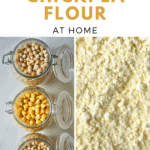
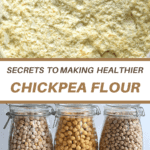
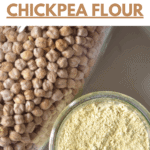
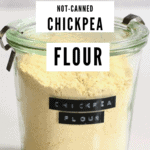
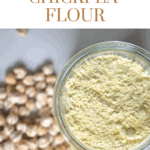
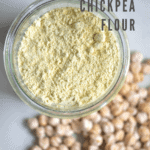
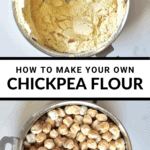
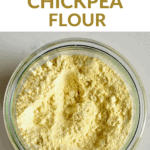
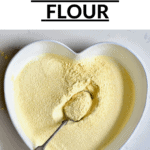
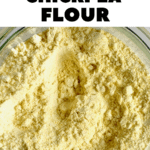
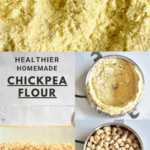
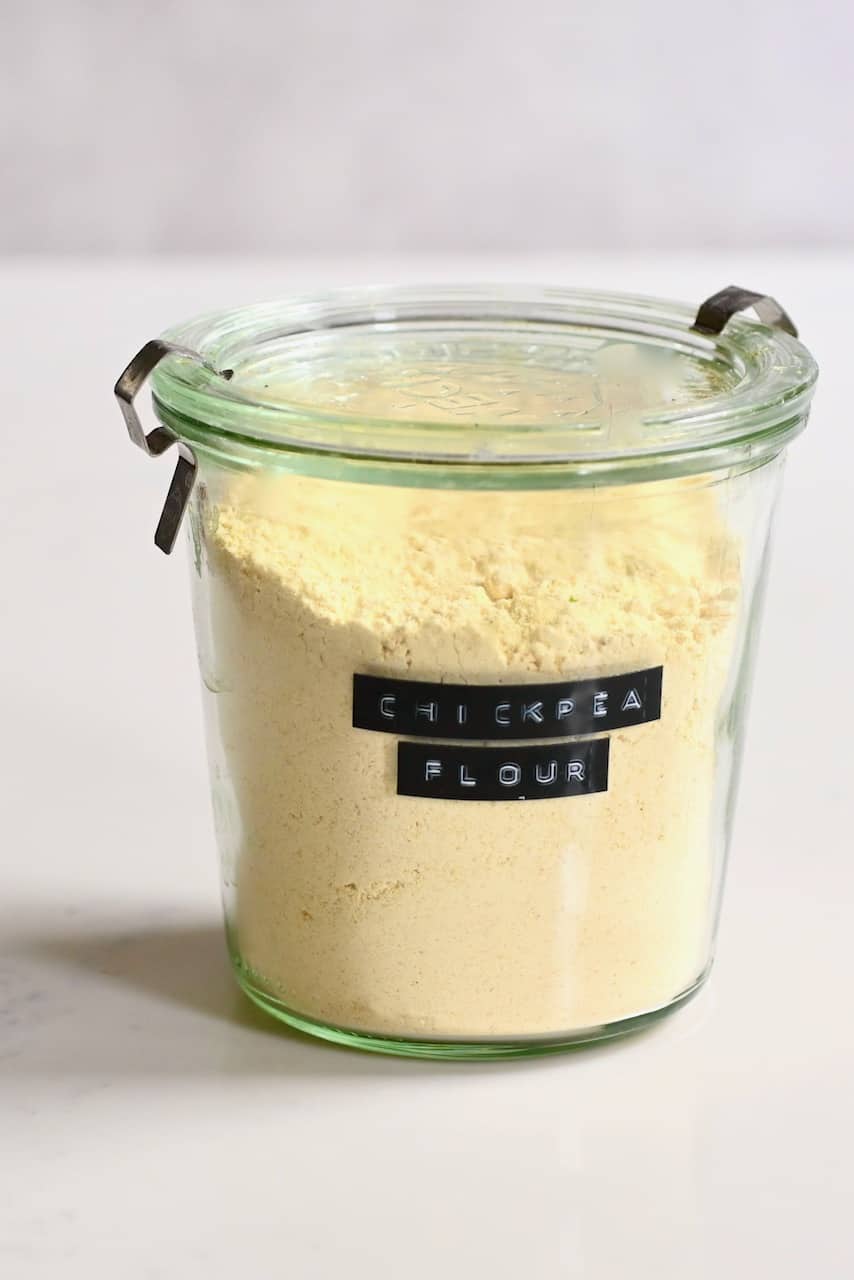
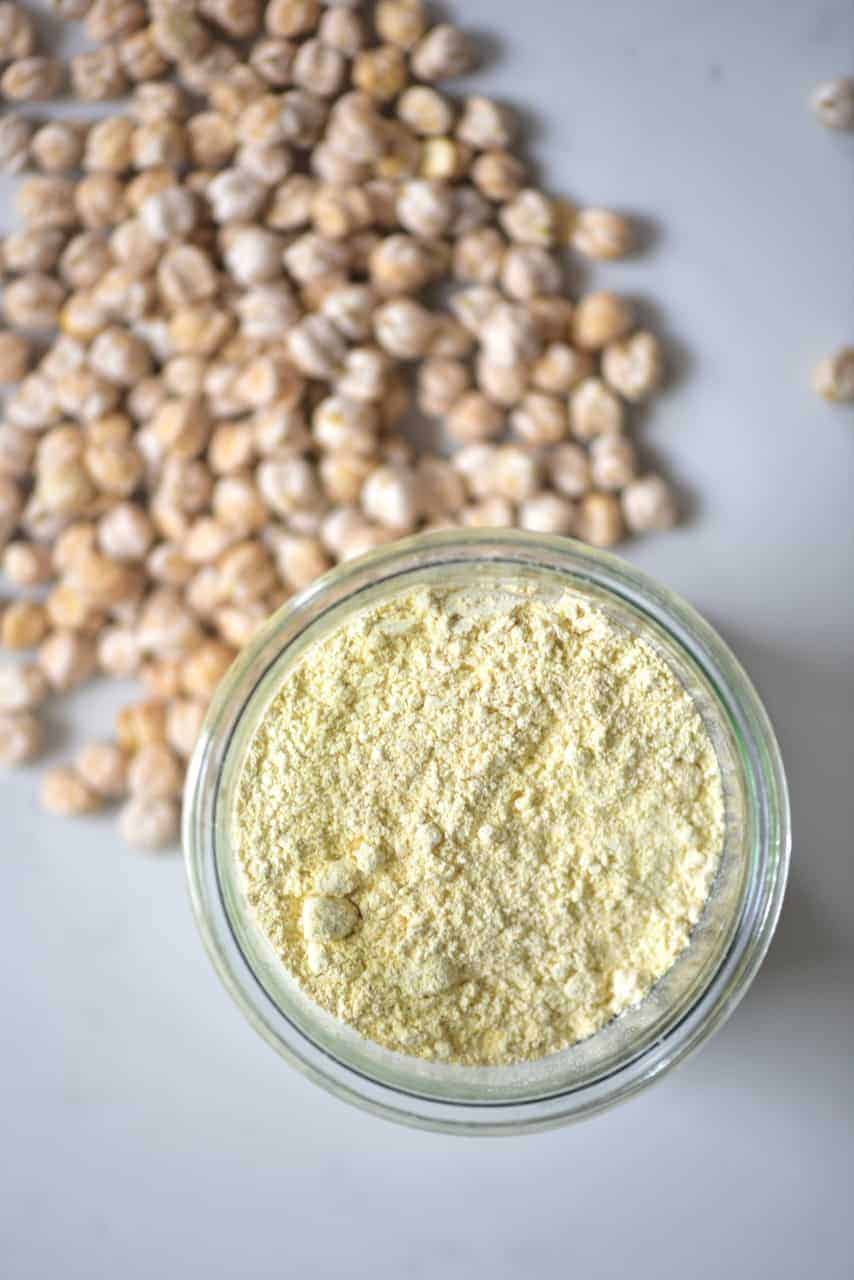
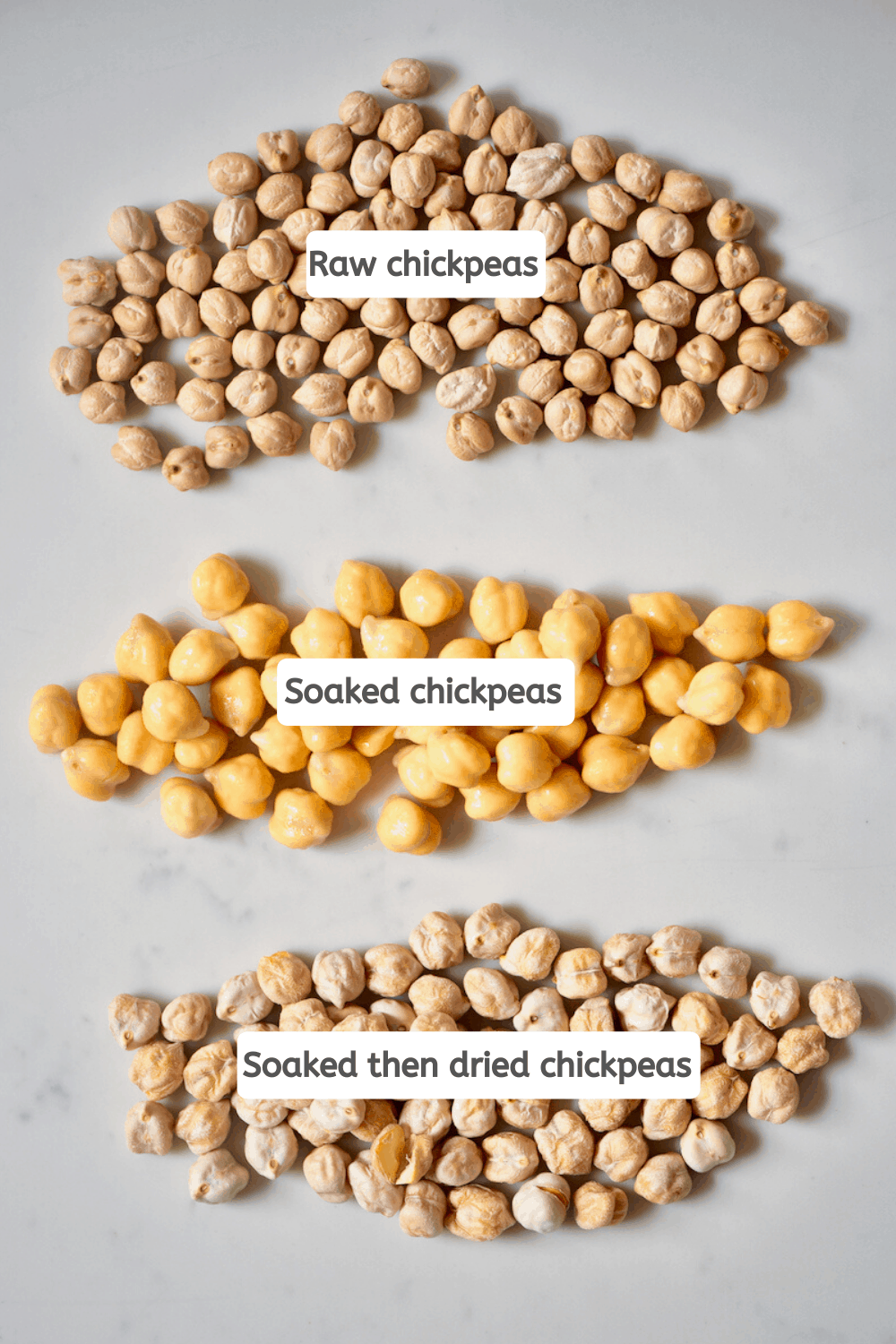
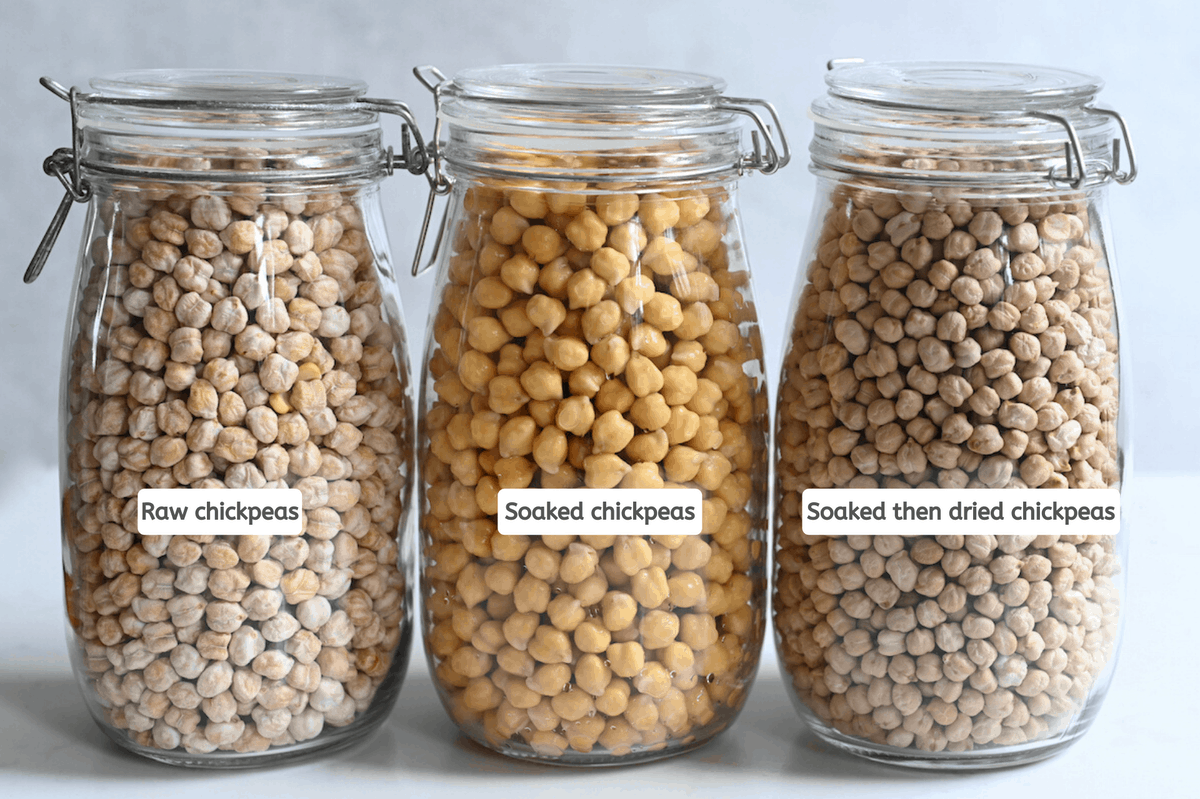
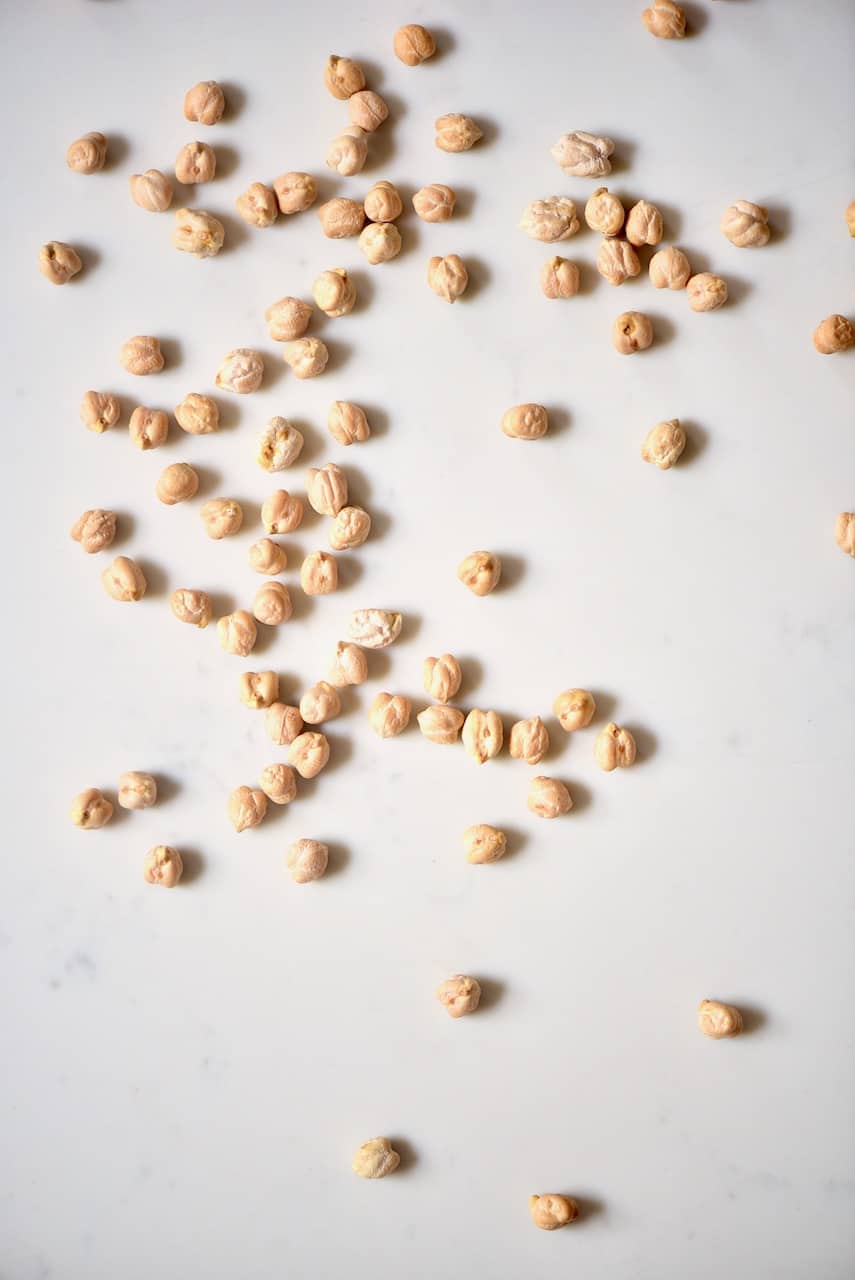
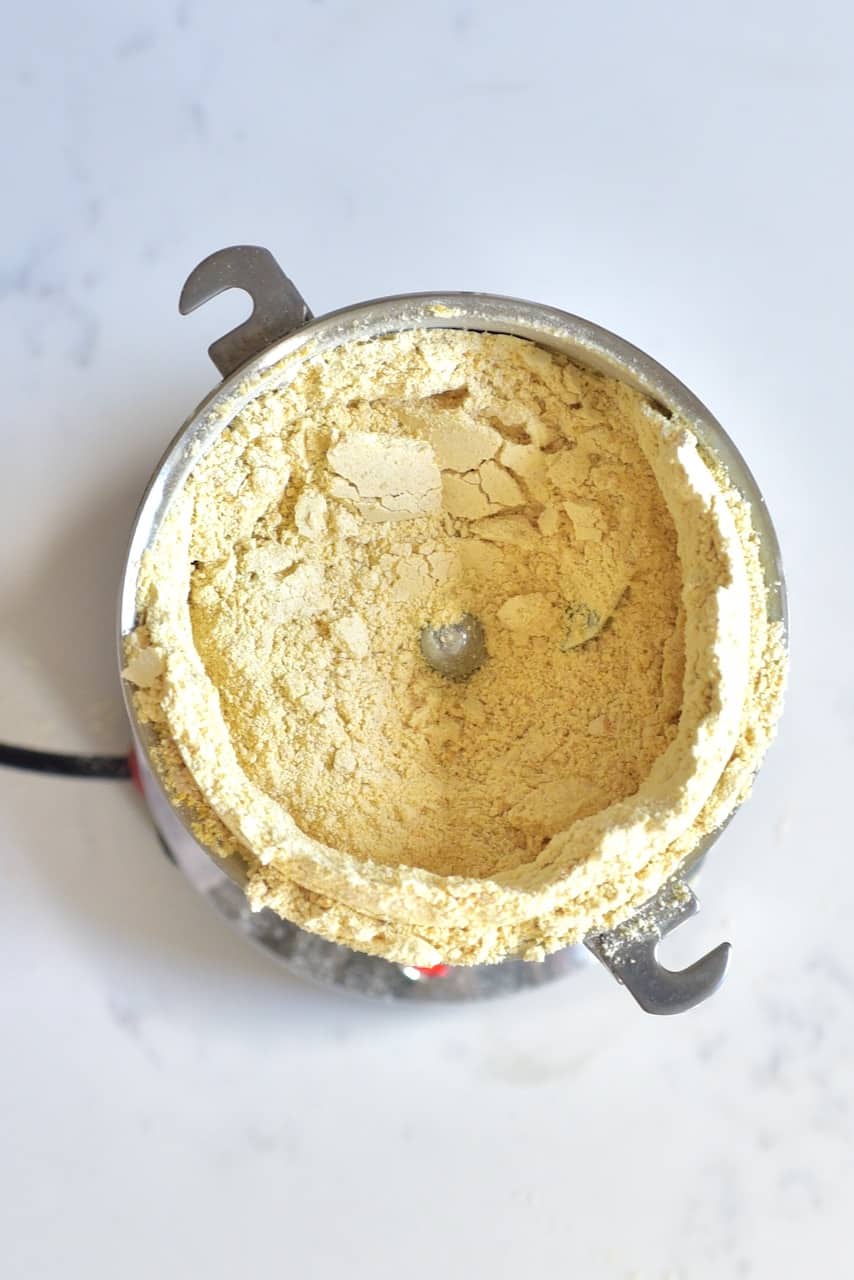
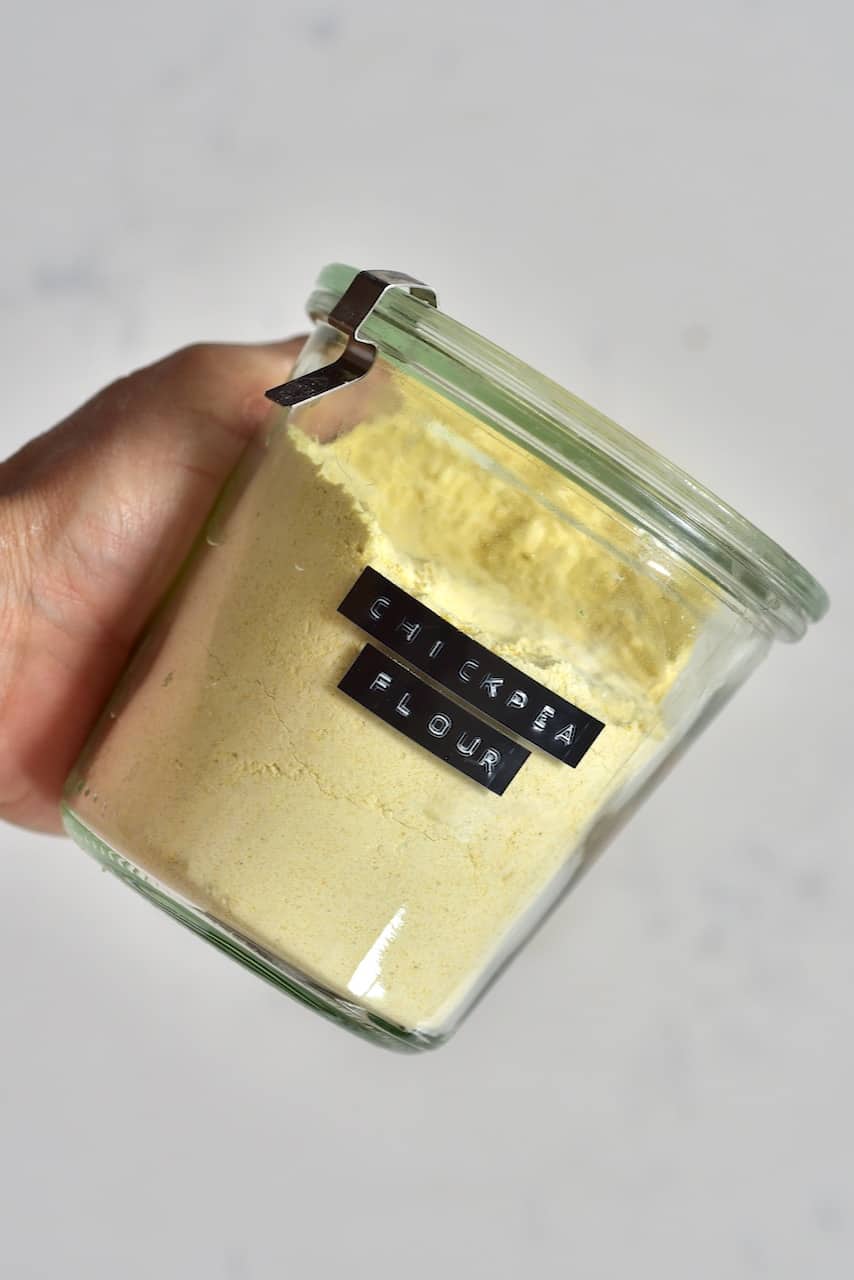
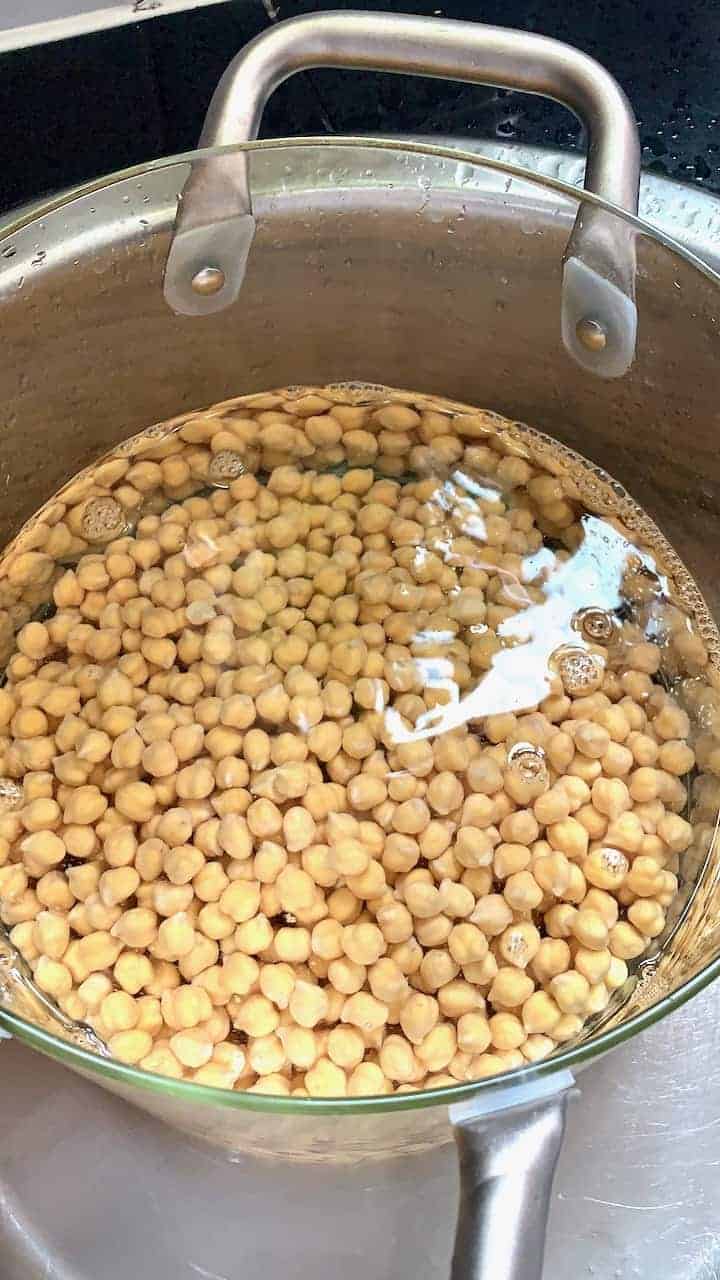
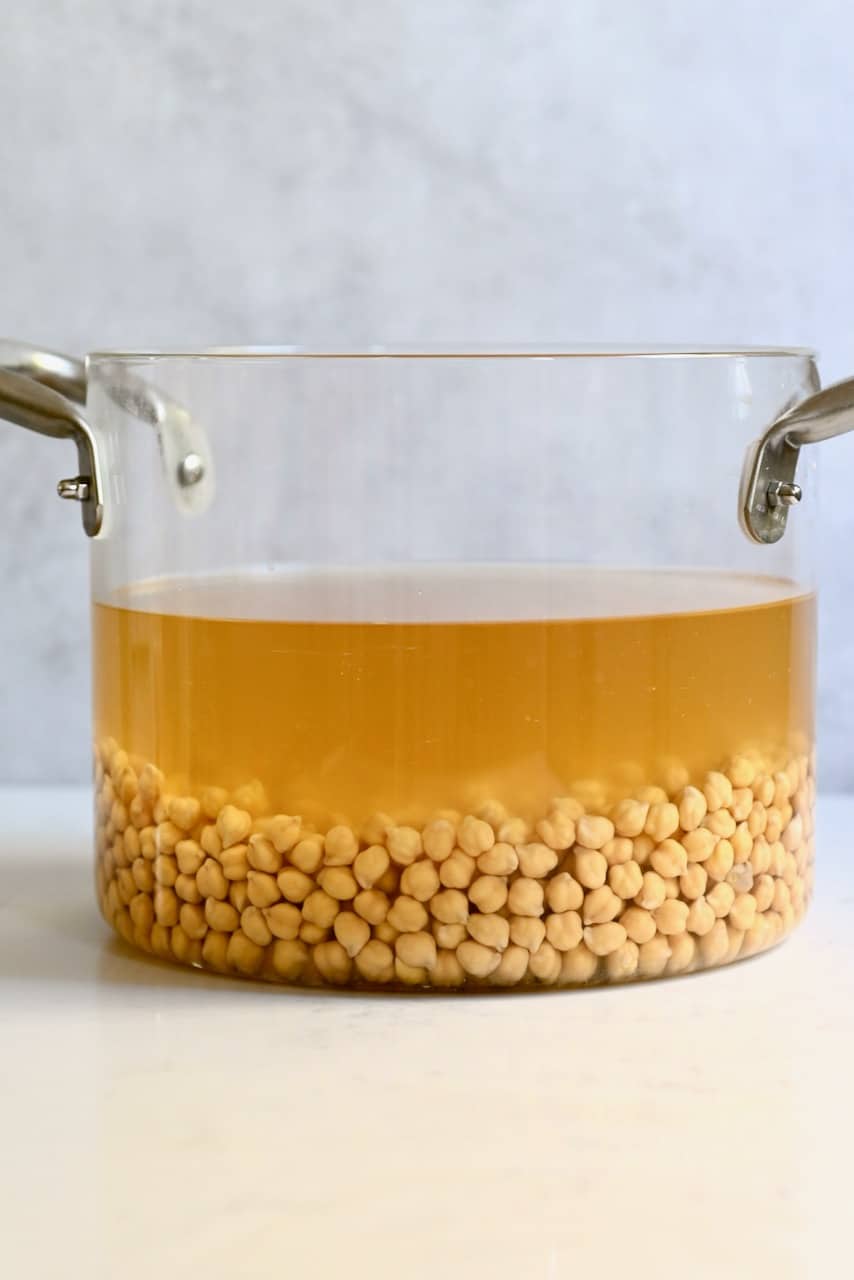
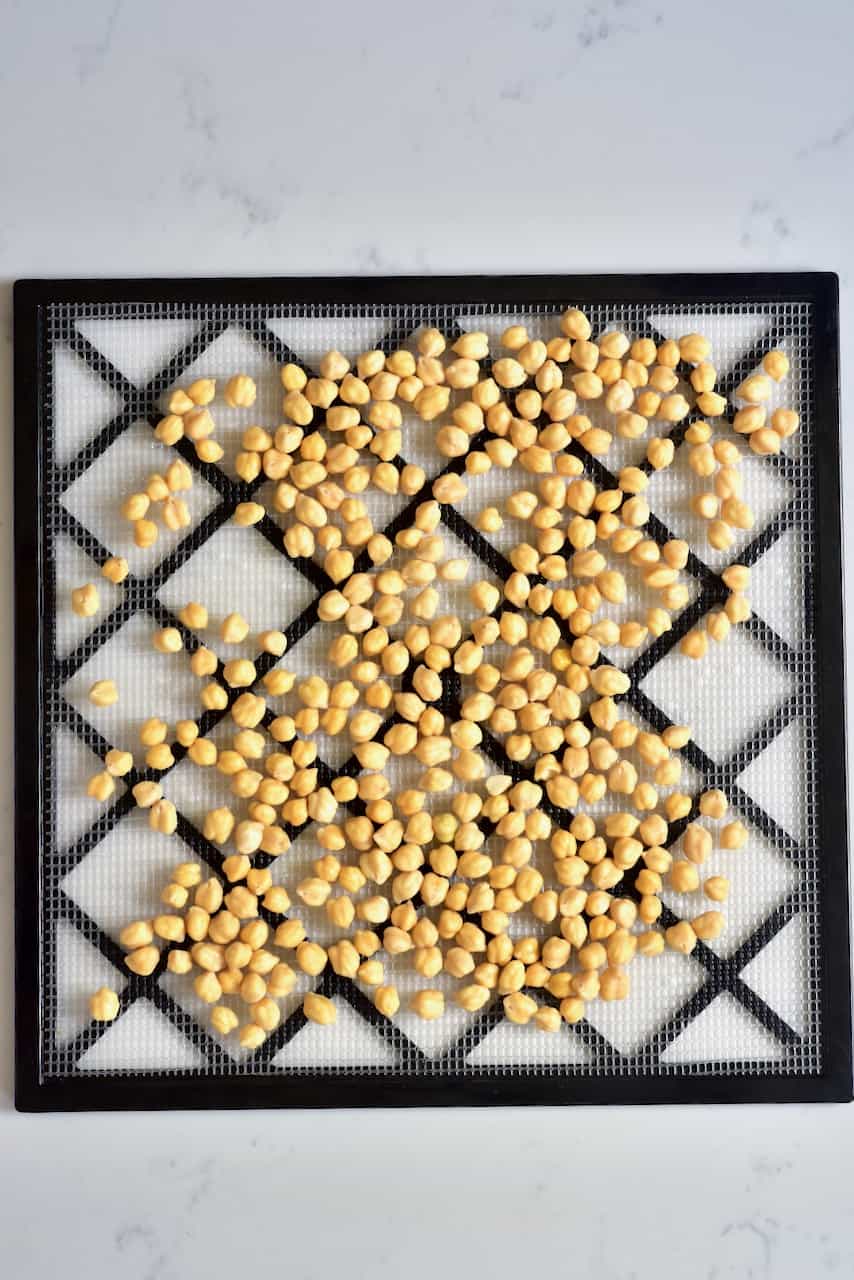
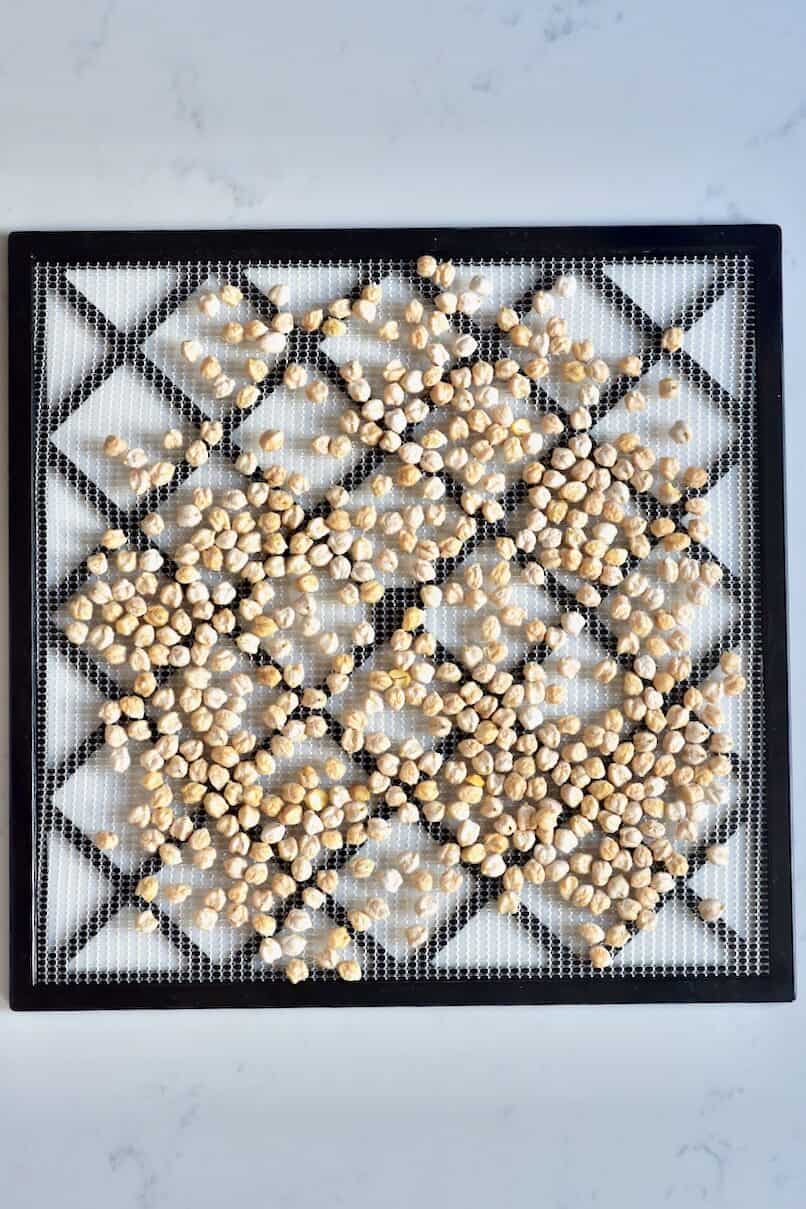
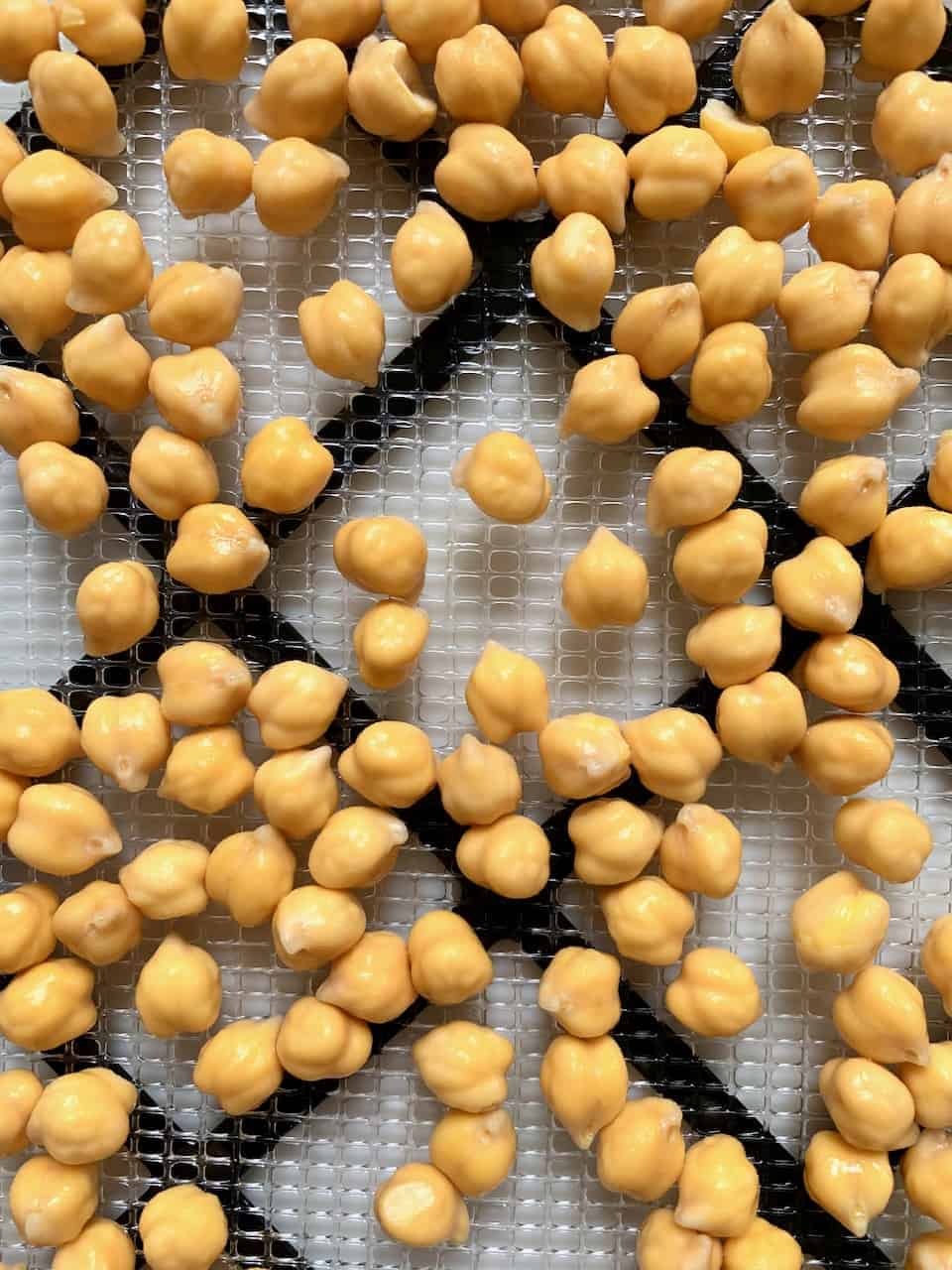
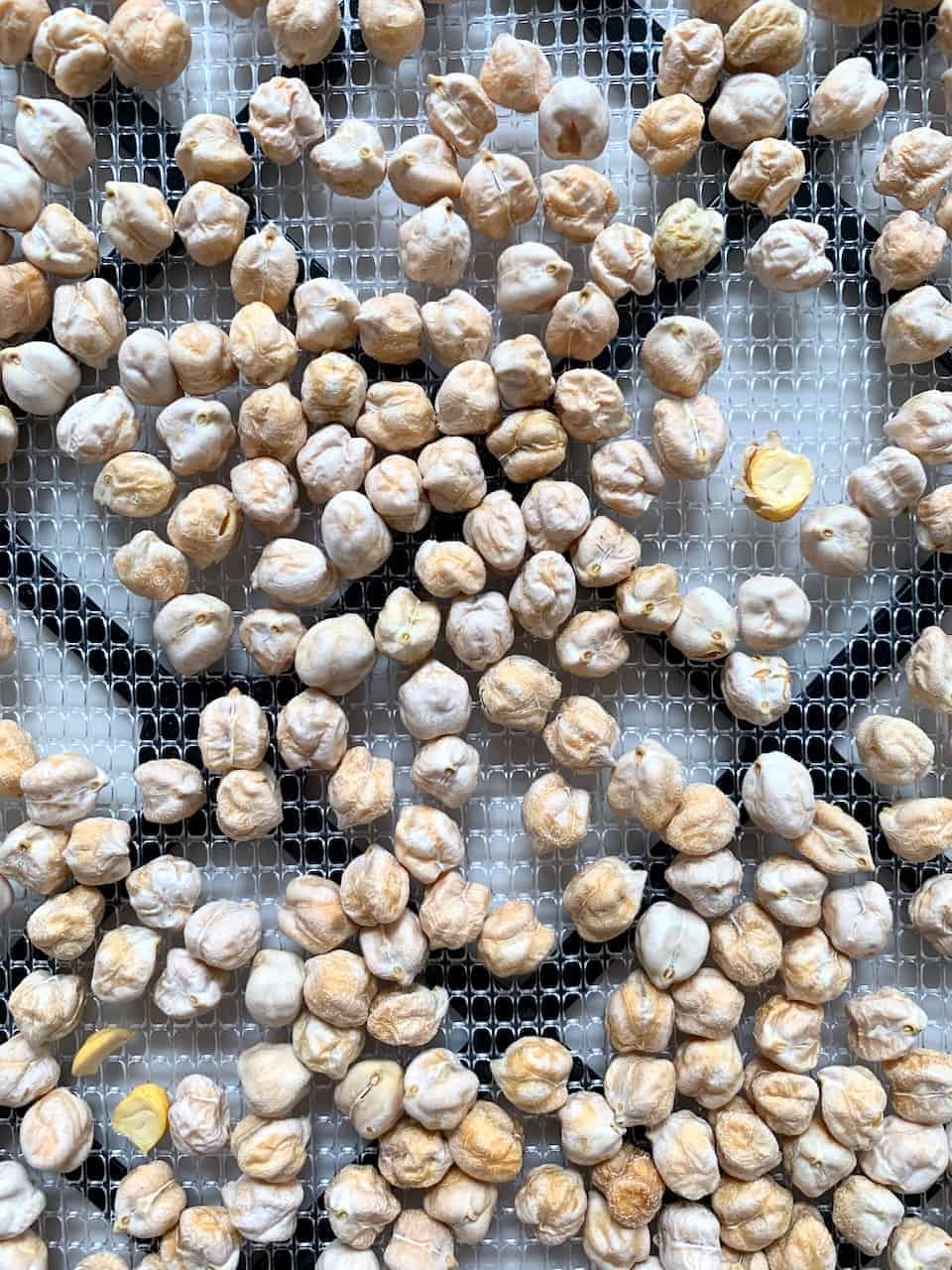
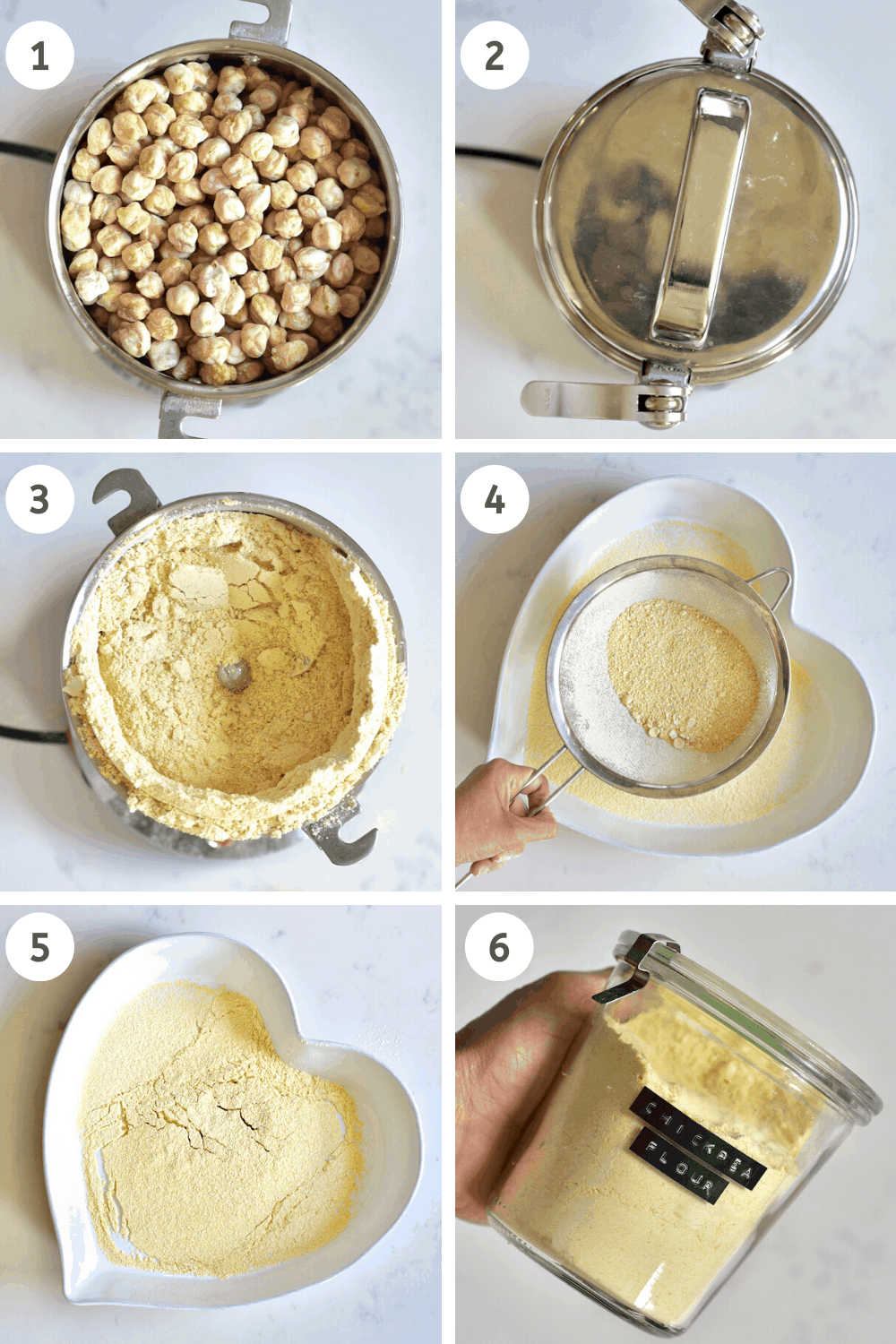
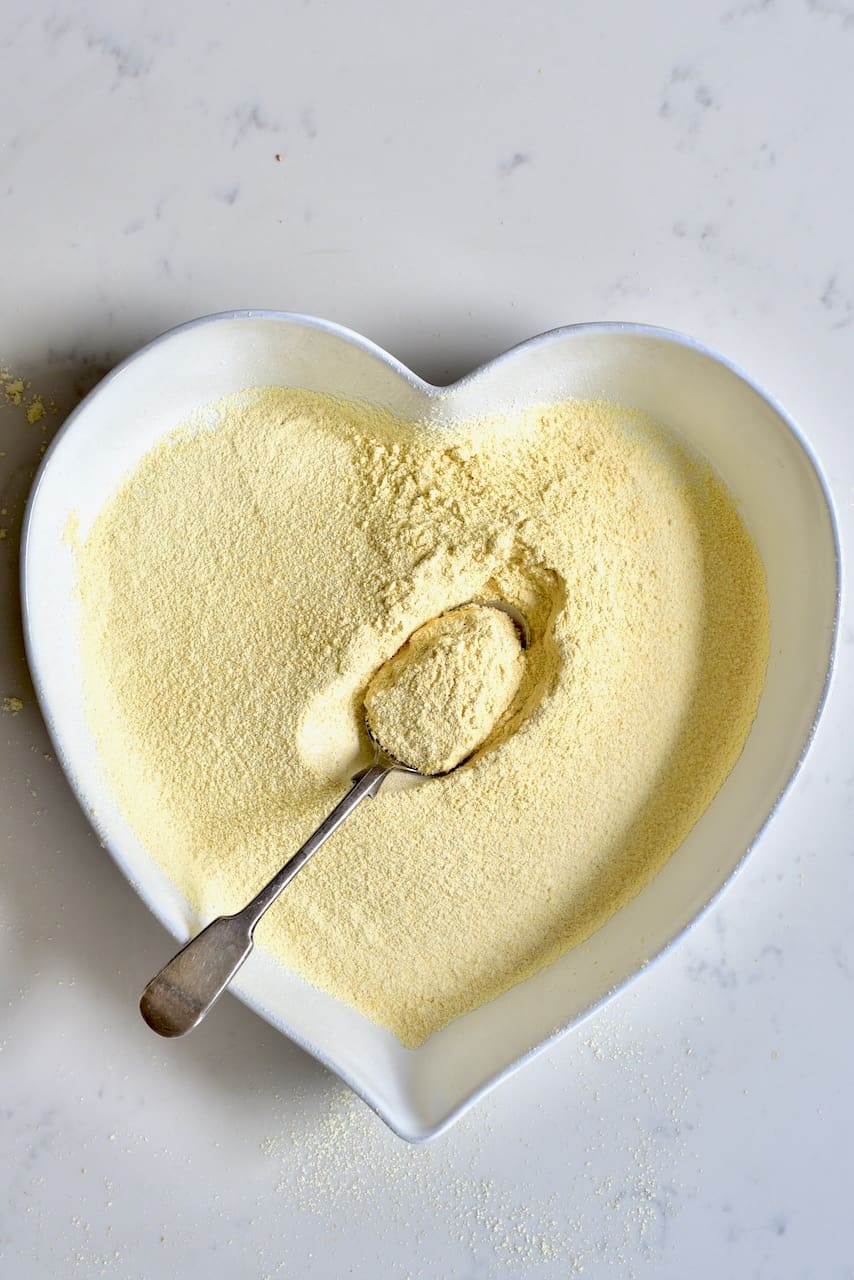
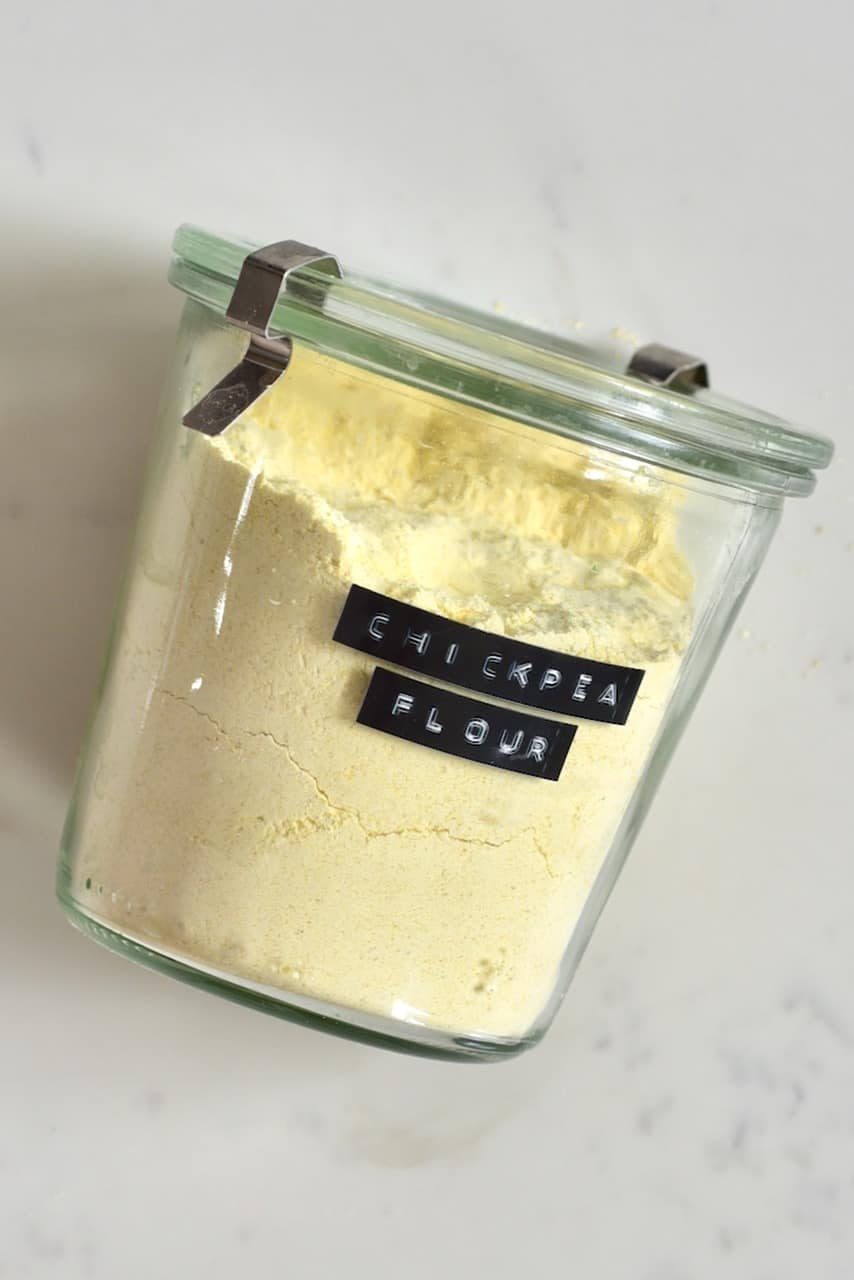
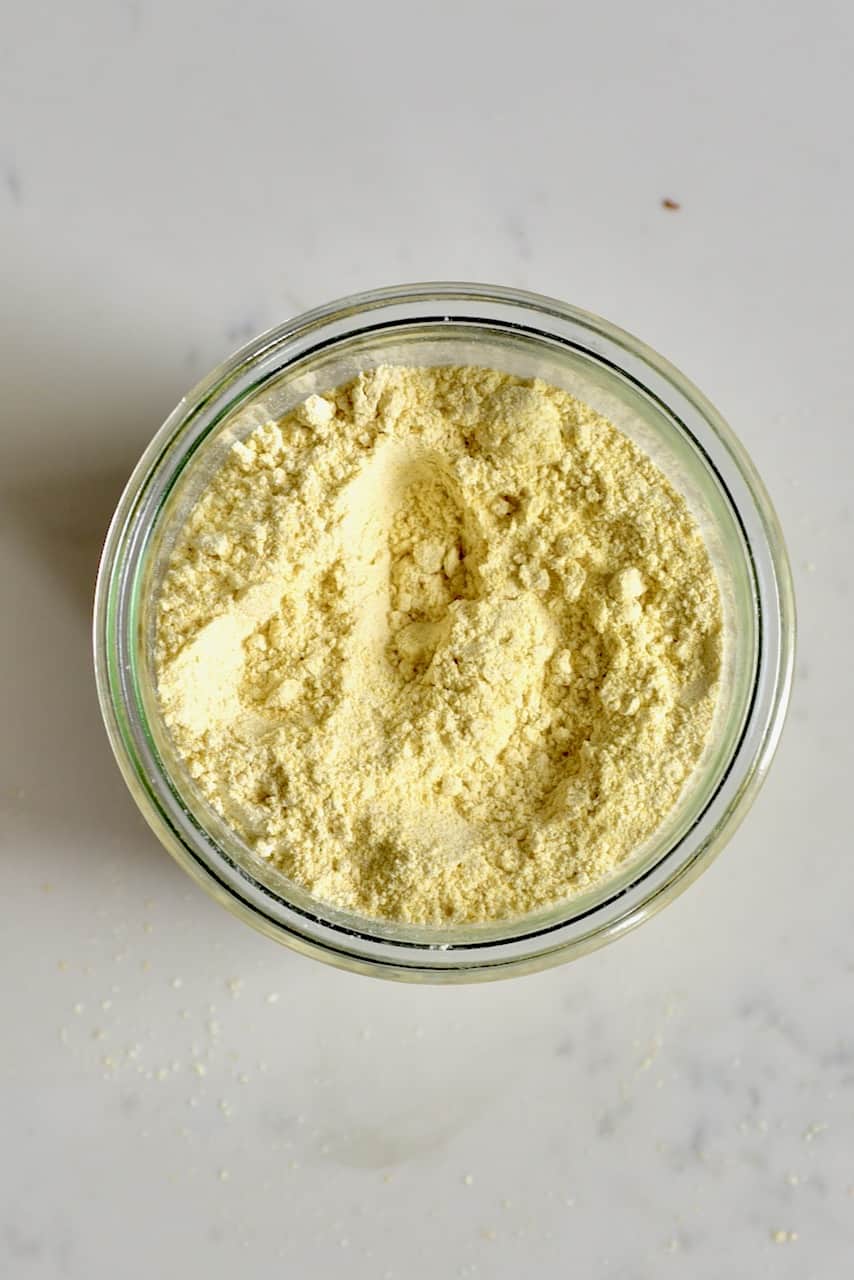
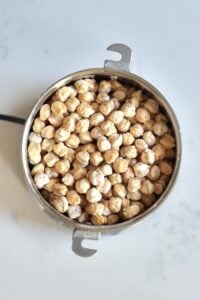
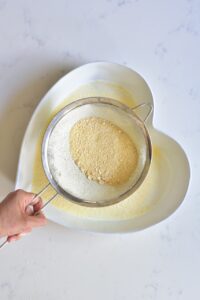
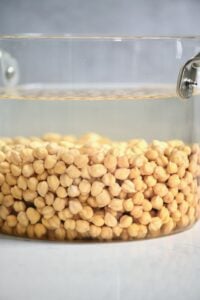
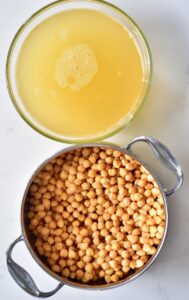
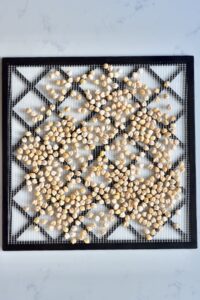
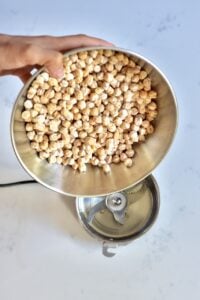
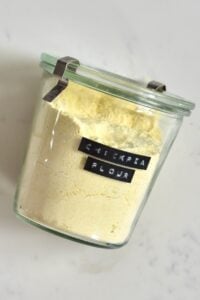









Could you use a blow dryer to dry the beans?
Hi Stephanie,
I don’t think that would work to dehydrate the chickpeas. If you live somewhere warm, you can let them air dry in a sunny spot for a few days. Alternatively, if your oven goes down to 120ºF/50ºC, you can dehydrate them in it (if it only goes down to 150ºF/65ºC, you could prop the door open so the air can circulate). The chickpeas need to be completely dry so they don’t end up a paste when grinding them. I hope this helps.
My oven only goes as low as 170 F. Can I still use it to dry the chickpeas? If yes, for how many hours? From previous comments sounds like I would need to prop the oven door open.
Thanks.
Hi Kay,
Yes, you can still use it to dry the chickpeas. It would be best to prop the oven door open with a wooden spool or another heat-proof tool – this will allow for air circulation and will bring the temperature a bit lower. Check on the chickpeas after a few hours (6-8 or so) and keep dehydrating them until they are completely dry. They should be completely dry – if you squeeze one between your fingers, it should feel firm and hard without any softness or moisture. If it’s still lightly soft and pliable, keep them in the oven for another hour and then check again.
Let me know how it goes if you decide to give it a try.
Please don’t use fry chickpeas from the store and grind them into flour. Uncooked chickpeas contain toxins that can cause food poisoning.
Hi Natalie,
Please note that the flour should not be consumed raw, you will have to use the flour for cooking/baking and not raw.
Hi Can you please tell me what those storage jars with simple clip locks are please?
Hi,
They are weck jars with clamp seals. They are linked on the shop page here if you want to check them out – https://www.alphafoodie.com/shop/
Hi, will the chickpeas dry out in the fridge? Or does the fridge keep the moisture in. Thanks!
Hi Syd,
Placing them in the fridge would rather keep the moisture in. You can dehydrate them in the oven (or dehydrator) or just by leaving them out in a well-ventilated area.
For my chickpea or any bean flour I first soak them overnight, then peel off if needed, break wet beans with blender into not too small pieces (when wet they are soft so blending is easy) and then put them thinly spread in the oven set on 100 C degrees with thermo circulation for 30 min, then mix them, and for another 30 min. Since they are defragmanted they dry very quickly. After this of course grind them.
Thank you for your comment, Martin. Even though it takes longer, a lower temperature is recommended for dehydrating in order to preserve more of the flavour and nutrition. If the temperature is higher, the chickpeas will cook instead of drying.
Does it give the same results when baked as store bought chickpea flour? Thanks
Hi Jared,
Yes, it does. 🙂
But you end up cooking/baking the flour anyway (and/or the chickpeas)…
The concern is possibly roasting them at the higher temps, which will slightly change the flavor, or potentially burning them if one is not careful.
Yes, that’s correct – you can easily burn them.
How long do you put them in the oven to dry out? I’m using canned garbanzo beans.
Hi Cyndi,
I would not recommend using canned beans, for best results try soaking dry chickpeas instead. If you decide to use canned chickpeas, you will have to make sure that they are completely dried out before grinding them into flour. You can dry it in the oven at 50ºC/120ºF for 12 hours.
THE WAY MARTIN MAKES THIS FLOUR IS PERFECTLY FINE. 100C IS ONLY 200F WHICH IS USUALLY THE TEMP RECOMMENDED FOR DRYING MANY FOODS.
BESIDES, MOST OVENS DON’T OFFER LOWER TEMPS. ACTUALLY I HAVE A GAS STOVE WITH AN OVEN HAT ONLY GOES DOWN TO 160C/ 320F.
✌☮️
Thank you, let me know if you tried it this way.
What is the difference between soaking and non soaking the chickpea
Hi Bahuleyan,
Soaking it will help remove pesticides and nasty residues from the chickpeas, it also makes digestion easier as well as increases its nutritional value. I hope this answers your question.
THAT’S PERFECT MARTIN, GREAT IDEA TO BREAK THEM UP SO THEY DRY FASTER. AND THE TEMPERATURE IS PERFECT. THNX FOR SHARING. I’LL MAKE MINE LIKE THAT WHENEVER I HAVE TIME, BEC I ACTUALLY PREFER NOT TO SOAK THEM TO DO IT QUICKER.
✌☮️
Thank you for your comment, Mariangeles. I hope you enjoy this recipe! 🙂
Hey there!
Thanks for the recipe, I am looking forward to trying it out!! I really appreciate the variety of methods.
Thanks for your comment, Michaela. Hope you enjoy it!
please I found it so valued that I want to know where and how to buy the chickpeas…is it been sold in cup,custard bucket or basin,bag… And how is the prices like.
A kg of chickpea flour is sold how much?tanx
Hello,
Depending on where you live, you should be able to find dried chickpeas in bulk or packaged in supermarkets or health stores – next to the beans and rice. You might even be able to find chickpeas at the farmer’s market.
Hi!! Very very nice and clear recipe!!
If I want to use this chickpea flour to make hummus, should I do any additional process? Or just cook a little bit this flour and then mix it with the other ingredients?
Thanks a lot for sharing =)
HI Beatriz,
Yes, you can make hummus with chickpea flour. You first need to mix everyting with the flour, then bring the mixture to boil and let it simmer for 3-5 minutes. Let me know how it goes if you give it a try.
Hi AlphaFoodie,
You’re information is great! Thank you.
Is there a benefit to soaking, then cooking, then drying the chickpeas to make flour? Also, do you have a link for how to sprout legumes?
thanks again,
Jason
Hi Jason,
I prefer the method of first soaking then dehydrating the chickpeas because this will make sure there’s no nasty residue on the chickpeas. Soaking is also said to increase their nutritional value and makes them easier to digest. Sprouting legumes is a similar process to what’s described in the first part of the post “How to grow wheatgrass“.
Hi! Is there a rule for the length of time to COOK the chickpea flour? Have been combining 1/4 cup chickpea flour, 1/2+ cup water, some sesame and chia seeds, then frying “pancakes” in a non-stick pan. They cook quickly and they affect me negatively. Is the flour too “raw” for comfortable digestion. So bloated. Help!
Hi Barb,
It’s possible that the flour remains too raw, indeed. Maybe you can try experimenting with cooking them for a few minutes longer. You can lower the temperature a bit so the outsides don’t burn, but keeping them longer on the pan should help the inside of the pancake cook. You can also cover the pan. I hope this helps.
It might also be the sesame seeds. I find raw sesame seeds give me a lot of bloating, so I soak them overnight before using them in smoothies and food and that has helped me.
Thank you for sharing, Charlene! This is a great tip!
I use chickpea flour to make focaccia bread! It was delicious!
Thank you for your comment, Josh.
Can you use chickpea flour to make ravioli dough.
Carol
Yes, though it isn’t something I’ve tried just yet. The dough may be a bit crumbly due to the lack of gluten. However, adding a little xanthan gum to the dough helps to make it more flexible (or even tapioca starch).
Hi,
I’ve soaked & laid out my chick peas. I don’t have a dehydrator and I can’t leave them in the sun because I’m not home during the day, can I put them in the oven? If so, how much degrees?
Hi Christina,
You can dehydrate them in the oven at 120ºF/50ºC for about 10-12 hours. If your oven doesn’t have such a low temperate, choose the lowest and crack open the door while drying them (use a wooden spoon or another heat-proof utensil to prop open the door slightly).